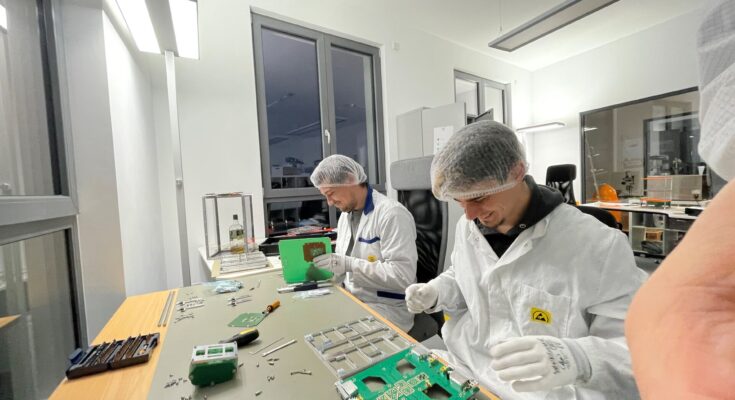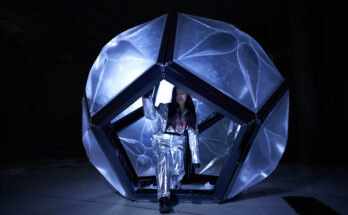Europe’s newest rocket soon launches, taking with it many space missions each with a unique objective, destination and team at home, cheering them on. Whether into Earth orbit to look back and study Earth, peer out to deep space or test important new technologies, Ariane 6’s first flight will showcase the versatility and flexibility of this impressive, heavy-lift launcher. Read on for all about Curium One, then see who else is flying first.
Curium One is a 12-unit (12U) CubeSat designed and manufactured by Berlin-based company Planetary Transportation Systems (PTS – previously Part-Time Scientists) in partnership with the Athens-based Libre Space Foundation. With its dozen units come a variety of goals for the first flight of Ariane 6.
One aim is to contribute to CubeSat and amateur radio communities through testing and developing open-source hardware and software, helping to enhance global communication infrastructure and educational opportunities in space tech. The mission will use the SatNOGS ground station network which consists of more than 200 stations around the globe, open to anyone to use, with all results made public and data freely distributed under Creative Commons.
A major technical goal of the mission is the first in-orbit demonstration of the state-of-the-art ‘SatNOGS-COMMS’ radio transceiver together with the Libre Space Foundation – a Greek not-for-profit organisation also pioneering open-source technologies in space.
SatNOGS-COMMS is an ultra-high frequency (UHF) and S-band radio transceiver – a communication device that can both transmit and receive radio waves using a ‘turnstile’ antenna. It is open source and fully compatible with the SatNOGS Network.
Verification of the transceiver will supply important information for the Libre Space Foundation’s upcoming PHASMA mission. For Planetary Transportation Systems, Curium One will provide the first in-orbit verification of their satellite design for use in planned future missions, boosting PTS’s space development across all of its projects.
“By advancing open-source satellite technology and amateur radio, Curium One will enhance communication infrastructures around the globe as well as provide educational opportunities in space technology,” explains Manolis Surligas, Software Developer at the LibreSpace Foundation.
Because Curium One’s software and hardware are almost entirely open-sourced, students and radio amateurs have already been actively organising and participating in the development of the satellite – several gaining academic achievements for their work.
“Our goal is to make space technology more accessible and affordable, and we are proud to validate the design of Curium One on Europe’s new heavy-lift rocket, demonstrating Ariane 6’s compatibility and its capability to deploy a variety of small satellite missions. We are extremely happy to participate in and witness this historic launch,” continues Jakob Mayer, Mechanical lead of the development team.
From the mission’s cost-effective silicon solar cells to the use of off-the-shelf components, its open-source development and staggeringly fast seven-month development time, Curium One is an important step in PTS’s ultimate goal – to make space technology more accessible and affordable, with direct applications in already planned future missions.
“Working with the incredibly experienced teams from Arianespace, ArianeGroup and ESA before and during the integration activities in May was a truly amazing experience for us. We are happy and very, very thankful to ESA and Ariane that we can witness and participate in this special Ariane 6 launch campaign,” concludes Paul Kötter, project manager of Curium One development.



